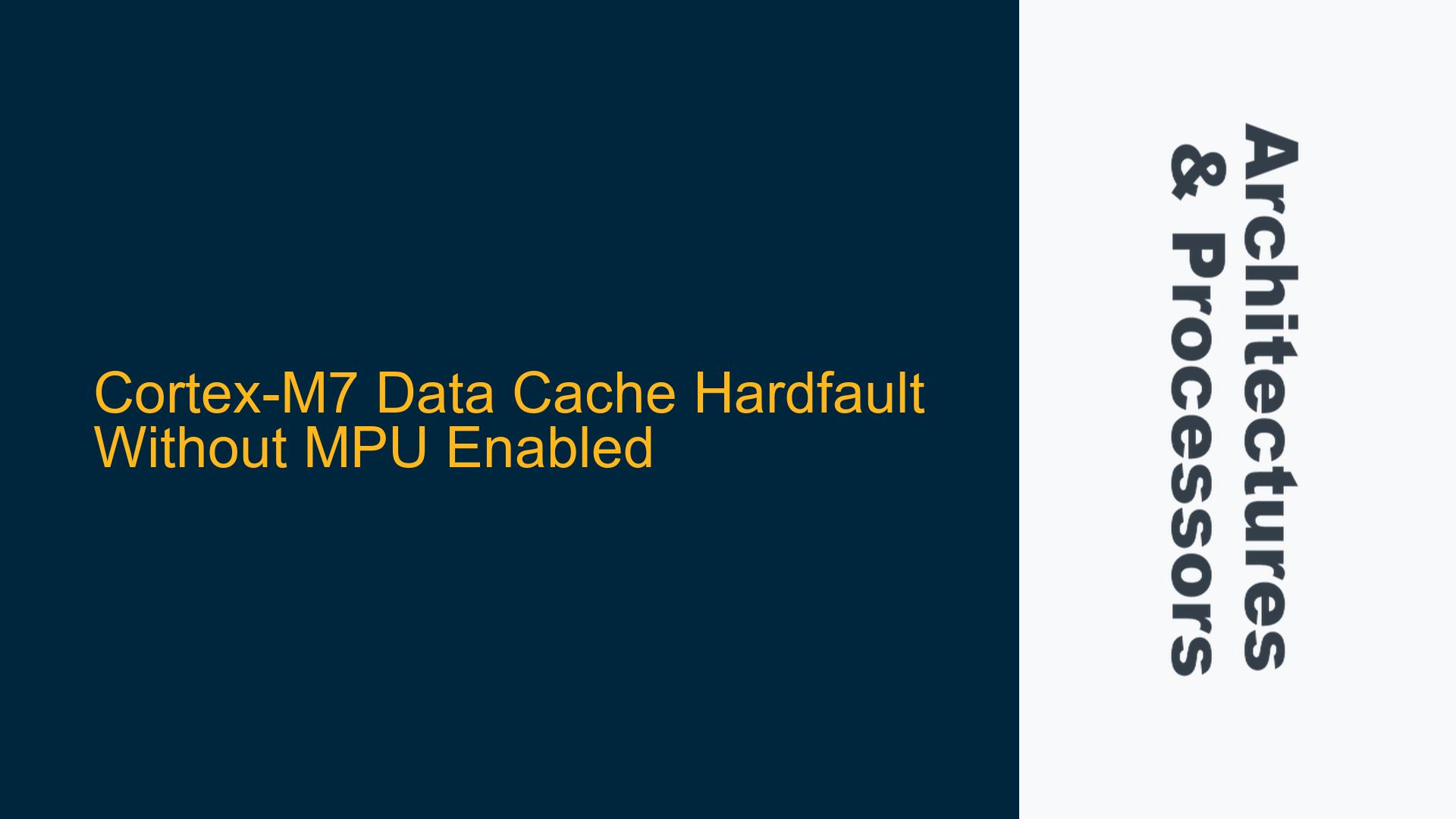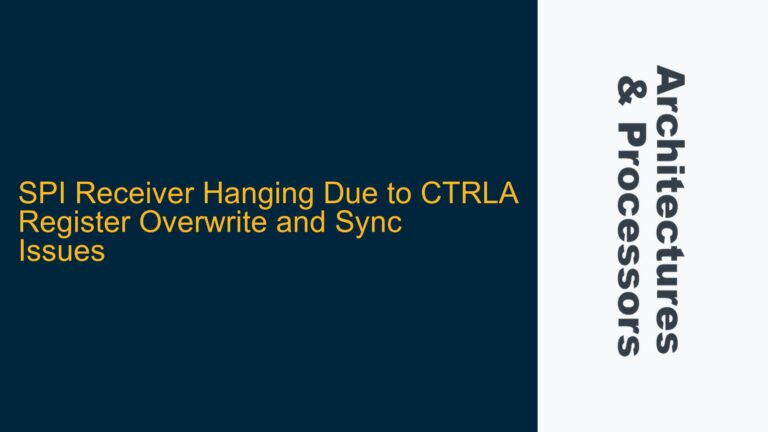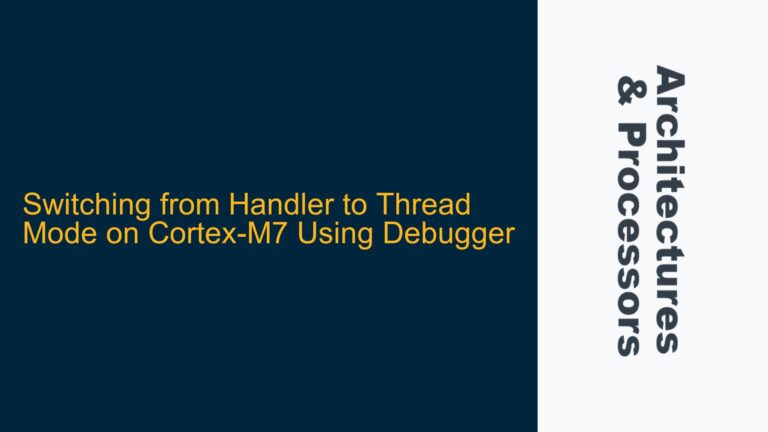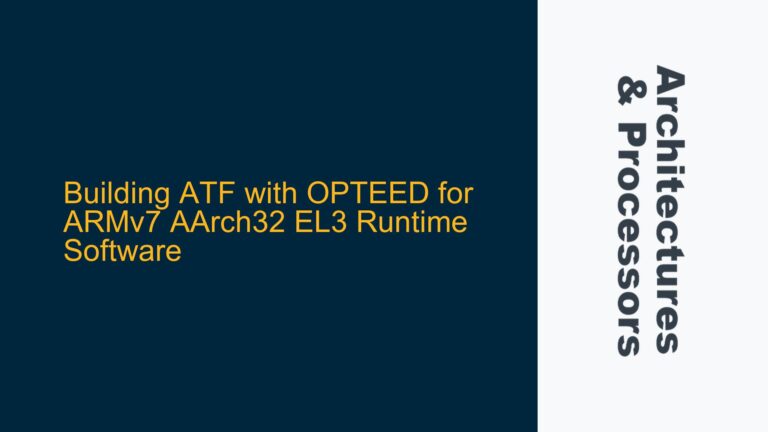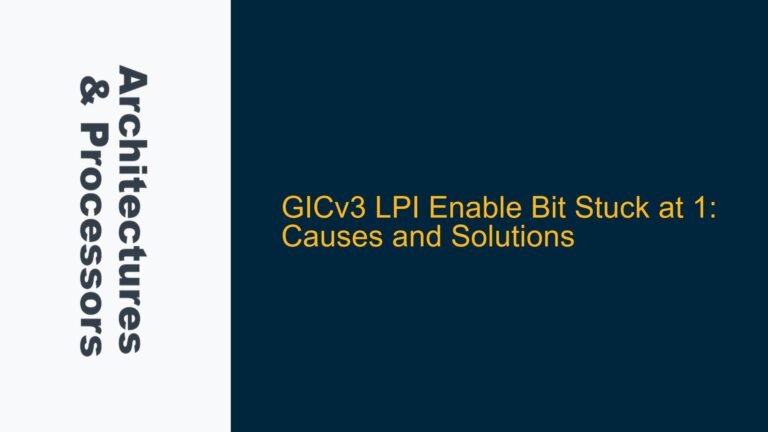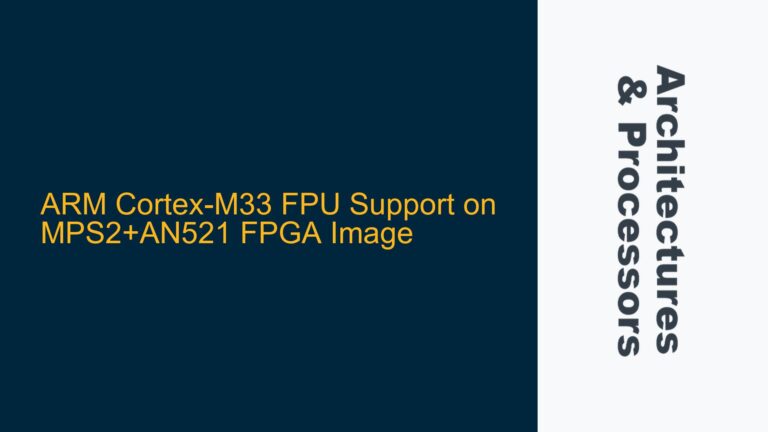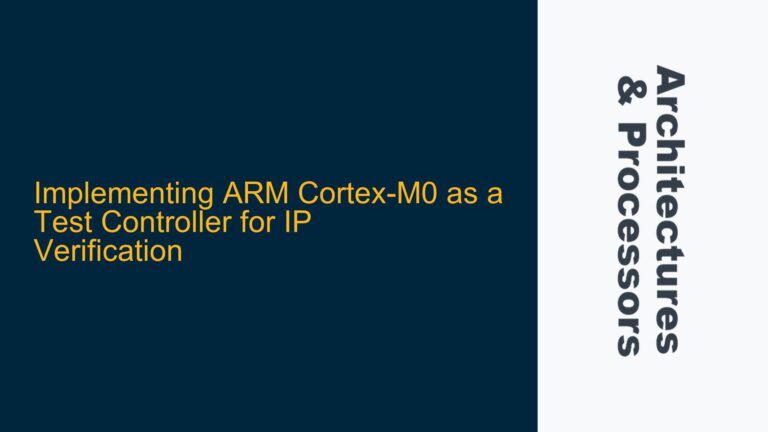Cortex-M7 Data Cache Activation Leading to Hardfault When MPU is Disabled
The Cortex-M7 processor, known for its high performance and advanced features such as the Memory Protection Unit (MPU) and data cache (D-Cache), can sometimes exhibit unexpected behavior when these features are misconfigured or improperly managed. One such scenario involves the activation of the D-Cache without enabling the MPU, which can lead to a hardfault. This issue is particularly perplexing because the Cortex-M7 memory map has default attributes that should theoretically prevent such faults. However, the interaction between the cache, memory attributes, and the MPU is nuanced, and understanding the root cause requires a deep dive into the Cortex-M7 architecture.
Cortex-M7 Cache Behavior and MPU Interaction
The Cortex-M7 processor integrates a data cache (D-Cache) to improve performance by reducing memory access latency. The D-Cache operates based on memory attributes defined in the MPU or, if the MPU is disabled, the default memory attributes. The default memory attributes are defined by the ARM architecture and are typically sufficient for most applications. However, the Cortex-M7’s cache behavior can become problematic when the D-Cache is enabled without the MPU, especially if the memory regions being accessed have conflicting or improperly defined attributes.
When the MPU is disabled, the Cortex-M7 relies on the default memory attributes, which are defined as follows:
- Normal Memory: Cacheable, bufferable, and executable.
- Device Memory: Non-cacheable, non-bufferable, and executable.
- Strongly Ordered Memory: Non-cacheable, non-bufferable, and executable.
The default memory map assigns the address range 0x20000000 and above as normal memory, which is cacheable. This means that when the D-Cache is enabled, any access to this memory region will be cached. However, if the memory access patterns or the memory attributes are not properly aligned with the cache behavior, it can lead to inconsistencies and, ultimately, a hardfault.
Memory Attribute Mismatch and Cache Coherency Issues
The hardfault observed when enabling the D-Cache without the MPU is likely due to a mismatch between the expected memory attributes and the actual memory behavior. The Cortex-M7’s cache coherency mechanism relies on the memory attributes to determine how data is cached and invalidated. If the memory attributes are not properly defined or if there is a mismatch between the cache behavior and the memory access patterns, it can lead to data corruption or invalid memory accesses, triggering a hardfault.
One possible cause of this issue is the lack of proper cache invalidation before enabling the D-Cache. Although the user mentioned that the cache was invalidated before enabling the D-Cache, it is possible that the invalidation process was not thorough or that some cache lines were not properly invalidated. This can lead to stale data in the cache, which can cause inconsistencies when the cache is enabled.
Another potential cause is the interaction between the cache and the memory access patterns. The Cortex-M7’s cache is designed to operate efficiently with sequential memory accesses. However, if the memory access patterns are non-sequential or if there are frequent cache line evictions, it can lead to cache thrashing and increased latency. This can exacerbate any existing issues with cache coherency and memory attributes, leading to a hardfault.
Diagnosing and Resolving Cortex-M7 Cache-Related Hardfaults
To diagnose and resolve the hardfault issue when enabling the D-Cache without the MPU, the following steps should be taken:
-
Analyze the Tarmac Trace: The Tarmac trace is a detailed log of the processor’s execution, including instructions, memory accesses, and exceptions. By analyzing the Tarmac trace, it is possible to identify the exact instruction that caused the hardfault and the state of the processor at the time of the fault. This information is crucial for understanding the root cause of the issue.
-
Verify Cache Invalidation: Ensure that the cache invalidation process is thorough and covers all cache lines. The Cortex-M7 provides several instructions for cache management, including the Data Cache Invalidate by Address (DC IVAC) instruction. This instruction invalidates a specific cache line based on the address provided. It is important to ensure that all relevant cache lines are invalidated before enabling the D-Cache.
-
Check Memory Attributes: Verify that the memory attributes are properly defined and aligned with the cache behavior. If the MPU is disabled, the default memory attributes should be sufficient, but it is still important to ensure that the memory regions being accessed are properly defined. If necessary, the MPU can be enabled to define custom memory attributes that align with the application’s requirements.
-
Implement Data Synchronization Barriers: Data Synchronization Barriers (DSB) and Instruction Synchronization Barriers (ISB) are used to ensure that all memory accesses are completed before proceeding to the next instruction. These barriers are particularly important when enabling or disabling the cache, as they ensure that all pending memory operations are completed before the cache state is changed.
-
Optimize Memory Access Patterns: If the memory access patterns are non-sequential or if there are frequent cache line evictions, it may be necessary to optimize the memory access patterns to reduce cache thrashing and improve performance. This can be achieved by reorganizing data structures, using DMA for bulk data transfers, or aligning data to cache line boundaries.
-
Enable MPU for Custom Memory Attributes: If the default memory attributes are not sufficient, the MPU can be enabled to define custom memory attributes that align with the application’s requirements. The MPU allows for fine-grained control over memory regions, including cacheability, bufferability, and executability. By enabling the MPU and defining custom memory attributes, it is possible to ensure that the cache behavior is aligned with the memory access patterns, reducing the risk of hardfaults.
Conclusion
The Cortex-M7’s D-Cache is a powerful feature that can significantly improve performance, but it requires careful management to avoid issues such as hardfaults. When enabling the D-Cache without the MPU, it is important to ensure that the cache is properly invalidated, the memory attributes are aligned with the cache behavior, and the memory access patterns are optimized. By following the steps outlined above, it is possible to diagnose and resolve cache-related hardfaults, ensuring reliable and efficient operation of the Cortex-M7 processor.
